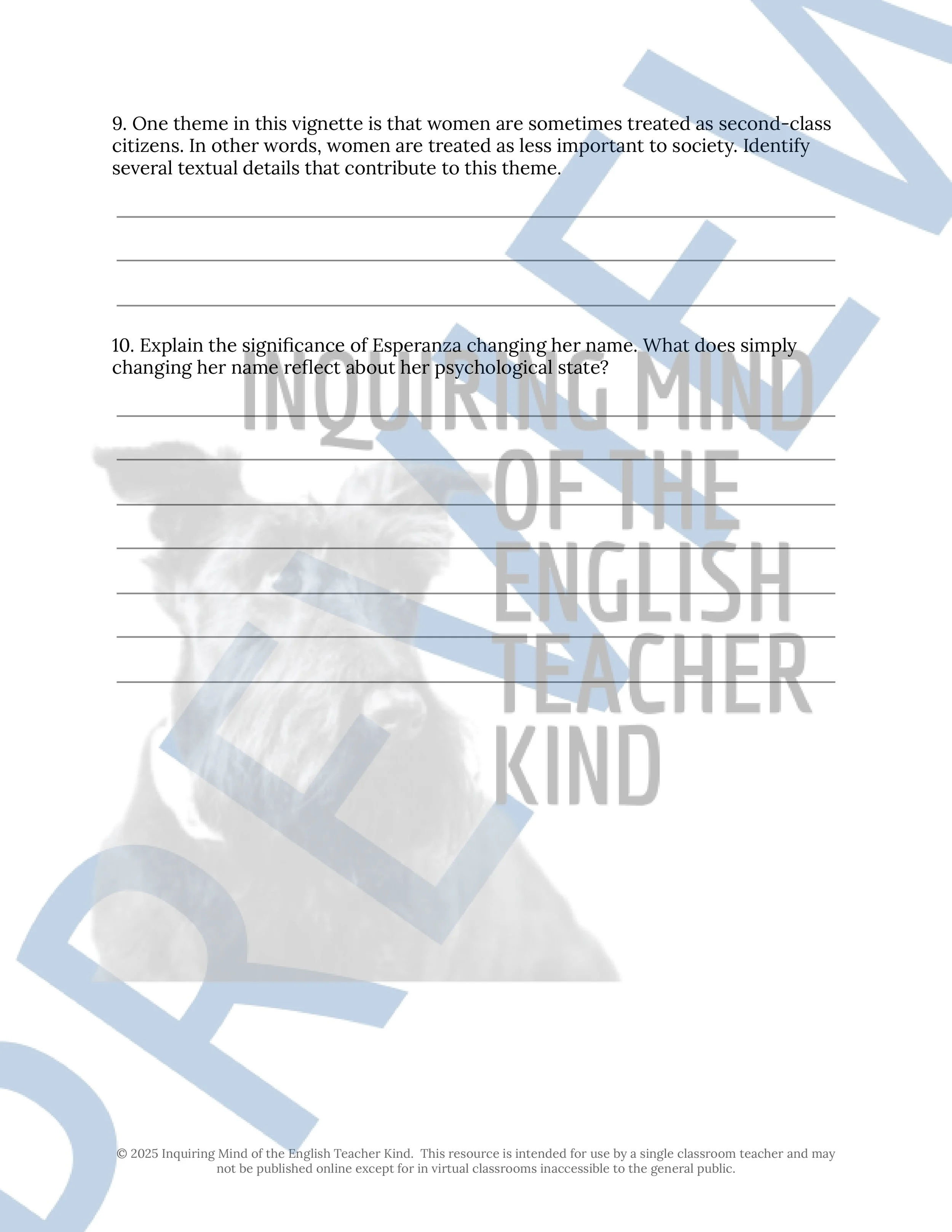 Image 1 of 11
Image 1 of 11

 Image 2 of 11
Image 2 of 11

 Image 3 of 11
Image 3 of 11

 Image 4 of 11
Image 4 of 11

 Image 5 of 11
Image 5 of 11

 Image 6 of 11
Image 6 of 11

 Image 7 of 11
Image 7 of 11

 Image 8 of 11
Image 8 of 11

 Image 9 of 11
Image 9 of 11

 Image 10 of 11
Image 10 of 11

 Image 11 of 11
Image 11 of 11












The House on Mango Street "Edna's Ruthie" Close Reading Inference Worksheet
Help middle and high school students improve critical thinking skills and explore literary elements with this close reading analysis worksheet covering vignette 26 of The House on Mango Street by Sandra Cisneros ("Edna's Ruthie"). An answer key is provided. Materials are delivered in editable Word Document and printable PDF formats. (Alternatively, a Google Drive option is available.) By engaging with this close reading inference activity, students will:
Read for literal comprehension
Consult reference materials to learn and verify word meanings as needed
Infer the intended effects of the author's word choices and narrative techniques
Explore how characters think, behave, interact, and develop
Compare characters from two texts to articulate what they share in common, using Hans Christian Andersen's "The Nightingale" for reference
Support claims and inferences with relevant evidence and sound reasoning
Write about literature with clarity, accuracy, and precision
Come to class better prepared to discuss literature
Copyright law does not permit the inclusion of novel content, so the purchaser is responsible for providing students with the text.
Find more resources for teaching young adult fiction:
Help middle and high school students improve critical thinking skills and explore literary elements with this close reading analysis worksheet covering vignette 26 of The House on Mango Street by Sandra Cisneros ("Edna's Ruthie"). An answer key is provided. Materials are delivered in editable Word Document and printable PDF formats. (Alternatively, a Google Drive option is available.) By engaging with this close reading inference activity, students will:
Read for literal comprehension
Consult reference materials to learn and verify word meanings as needed
Infer the intended effects of the author's word choices and narrative techniques
Explore how characters think, behave, interact, and develop
Compare characters from two texts to articulate what they share in common, using Hans Christian Andersen's "The Nightingale" for reference
Support claims and inferences with relevant evidence and sound reasoning
Write about literature with clarity, accuracy, and precision
Come to class better prepared to discuss literature
Copyright law does not permit the inclusion of novel content, so the purchaser is responsible for providing students with the text.
Find more resources for teaching young adult fiction:
Preview this resource:
Help middle and high school students improve critical thinking skills and explore literary elements with this close reading analysis worksheet covering vignette 26 of The House on Mango Street by Sandra Cisneros ("Edna's Ruthie"). An answer key is provided.


























































































































